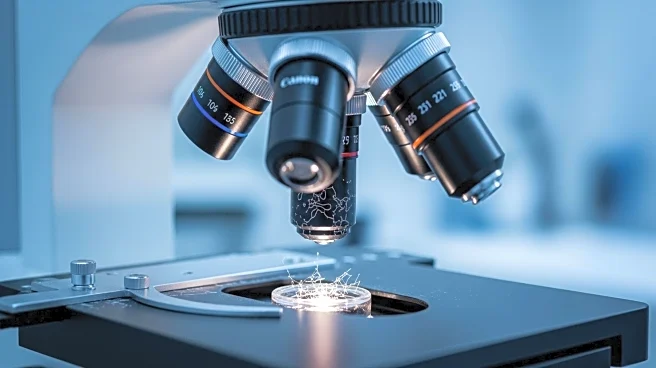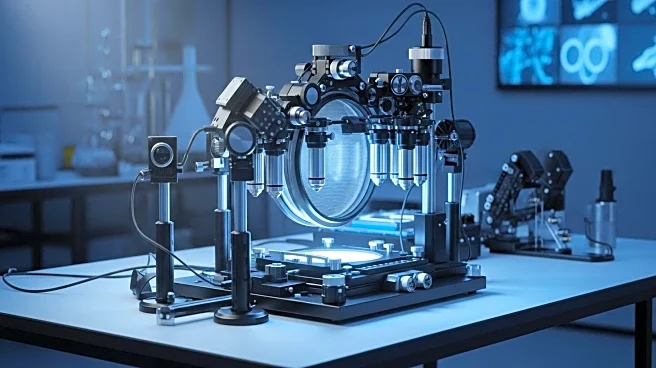What is the story about?
What's Happening?
A collaborative effort between the University of Stuttgart in Germany and the University of Melbourne in Australia has led to the development of a novel method for detecting nanoplastic particles in environmental samples. This method utilizes an optical microscope and a newly developed test strip known as the 'optical sieve.' The research, published in Nature Photonics, highlights the potential of this method to analyze nanoplastic concentrations directly on-site, as well as in blood or tissue samples. Nanoplastics, which are smaller than microplastics, pose significant environmental and health risks due to their ability to cross organic barriers such as skin and the blood-brain barrier. The new detection method offers a cost-effective and rapid alternative to conventional techniques like scanning electron microscopy, which are more expensive and require specialized personnel.
Why It's Important?
The development of this new detection method is crucial in addressing the growing concern over nanoplastic pollution. Nanoplastics have been linked to various health issues, including cardiovascular and respiratory diseases, and their pervasive presence in water bodies poses a significant threat to ecosystems and human health. By providing a more accessible and efficient means of detecting these particles, the method could enhance environmental monitoring and health research, potentially leading to better regulatory measures and pollution control strategies. Stakeholders such as environmental agencies, health researchers, and policymakers stand to benefit from improved data on nanoplastic distribution and impact.
What's Next?
The research team plans to conduct further experiments with non-spherical nanoplastic particles and explore the possibility of distinguishing between different types of plastics using the optical sieve. They are also seeking collaboration with other research groups that specialize in processing real environmental samples. These efforts could lead to advancements in the technology, making it a standard tool for environmental and health assessments. Additionally, the method's potential application as a mobile test strip could revolutionize on-site testing for nanoplastics in various settings, including water and soil.
Beyond the Headlines
The implications of this development extend beyond immediate environmental and health concerns. The ability to detect nanoplastics efficiently could influence public policy and consumer behavior, driving demand for more sustainable plastic alternatives and stricter regulations on plastic production and disposal. Furthermore, the method's simplicity and affordability could democratize access to environmental testing, empowering communities to monitor pollution levels independently and advocate for cleaner environments.
AI Generated Content
Do you find this article useful?

















